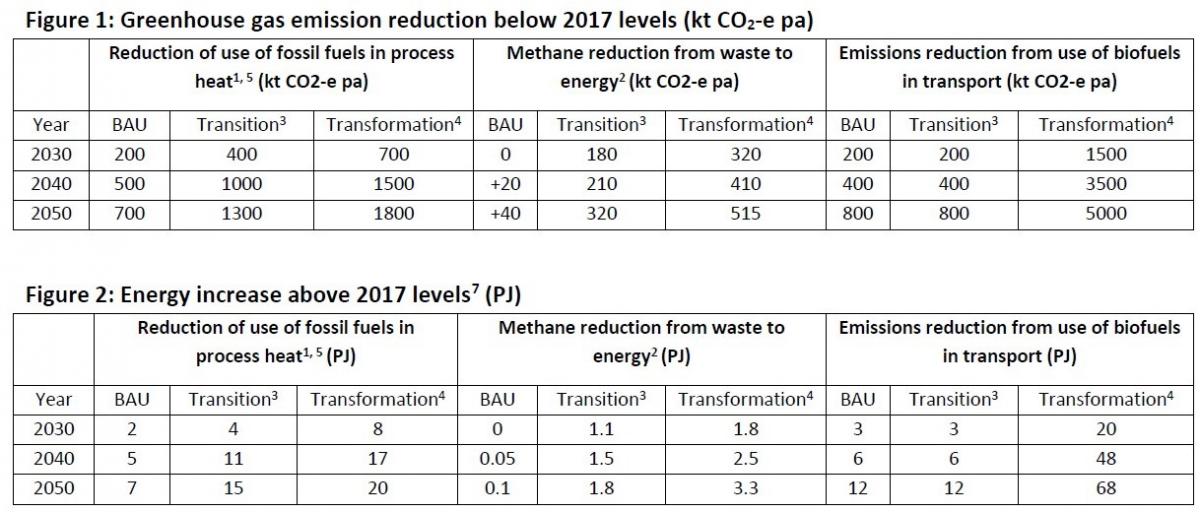Web181024: Ability of bioenergy and biofuels to reduce GHG emissions in NZ
A webinar presented by Brian Cox and Grant Smith of Bioenergy Association on 24 Oct 2018.
- View webinar flyer
- Listen to webinar recording
- View 'Bioenergy and net zero emissions - what's next?' workshop 25 Oct 2018 details
How much greenhouse gas emission reduction can be achieved
NZ can achieve a signficant amount of greenhouse gas emissions reduction by use of bioenergy and biofuels for electricity, heat and transport. Bioenergy and biofuels could be a significant part of the solution for reducing New Zealand's GHG emissions, increasing our energy security, enhancing regional development, and maintaining access to international markets for our goods and services.
The level of reduction in greenhouse gas emissions from bioenergy and biofuels below 2017 levels and the amount of energy produced from the use of biogas are set out below.

Notes
- Bioenergy Association Information Sheet 32 – Greenhouse gas emissions reduction using biomass energy for industrial and commercial heat, September 2018
- Bioenergy Association Information Sheet 31 – Greenhouse gas reduction using biogas technologies, September 2018
- Based on implementation of NZEECS
- Requires greater incentives than set out in NZEECS. Transport biofuel based on Scion Biofuels Roadmap, 2018
- Assumes that a significant volume of low temperature process heat currently produced from coal or gas can be substituted by heating from electricity by use of heat pumps.
- To achieve the encouraged transition scenario quantity of coal fired process heat substitution requires around 74,000kt/year of wood fuel which is within the wood fuel supplier’s capability to supply. To achieve the accelerated transformation scenario quantities of substitution will require development of additional sources of biomass.
- In 2016 2.7PJ of energy was produced from biogas. It is assumed that the biogas from landfill remains constant at the 2016 levels to 2050 with increases from some landfills being offset by decreases in biogas production at other landfills.
- The GHG offset from farm operations due to farming coming into the ETS has not been calculated and will be additional to the emissions reductions identified in Figure 4.
- The quantum achievable in the transport sector is currently being evaluated.
